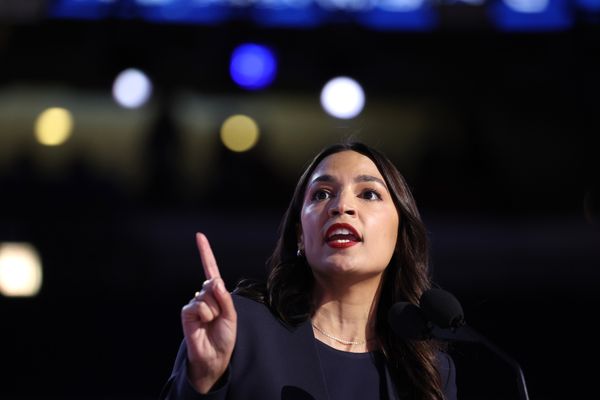
The UK is sliding towards a recession. Only six months ago, a strong recovery was expected, but the impact of the pandemic, the slow return to pre-Covid work patterns and soaring inflation driven by the Ukraine invasion have depressed the economy.
Last week the governor of the Bank of England, Andrew Bailey, warned that Britons are likely to suffer a deeper and longer downturn than other major industrialised nations. He also said inflation would be more severe and persistent.
Unique to the British experience is Brexit, which has imposed extra costs and restrictions on exporters to the EU and limited the supply of skilled labour. And after 10 years of austerity, publicly funded organisations entered the pandemic in a weak position and are now in an even worse state as they grapple with the rocketing cost of living and a shortage of workers.
But these are not the only reasons why the situation in the UK is so particularly bad. These charts illustrate the many overlapping issues that are holding the country back:
Labour shortages
Millions of people in the top two-thirds of the earnings ladder saved money during the pandemic – because opportunities for spending on travel, eating out and shopping were severely curtailed. With about £260bn in bank deposit accounts, it was reasonable to expect the recovery to see an explosion of demand.
When restrictions eased, employers put out a call for workers to meet that increased demand in restaurants, shops and more. However, many self-employed and older people who stopped working during the pandemic have stayed on the sidelines – unwilling to apply for jobs, or unable to because of illness.
The latest jobs figures, for the three months to April, show vacancies hitting a fresh high of 1.3m, and unemployment at a 40-year low.
According to the Institute for Employment Studies (IES), there are now about a million fewer people in the labour force than before the pandemic. Three-quarters of this can be explained by older people and those with long-term health conditions quitting the jobs market; the rest can be blamed on the lack of EU workers post-Brexit.
Pay levels are not helping draw people back to the workplace. When adjusted for inflation, pay fell by 4.5% in the year to April, the biggest fall since comparable records began in 2001. Tony Wilson, head of the IES, says: “The labour market continues to see a toxic combination of falling real-terms pay, high worklessness and labour shortages.”
Meanwhile the government has switched off its pandemic-related apprenticeship schemes, leaving only the much-maligned apprenticeship levy, which many employers say is bureaucratic and costly.
Brexit hit to trade
There is little doubt, 18 months after the UK quit the single market and customs union, that Britain’s trade has suffered significant and sustained damage. A report by the Centre for Economic Policy Research (CEPR) and the UK in a Changing Europe thinktank found the “desire to pursue a ‘hard’ Brexit had resulted in a major increase in trade barriers and trade costs in goods and services, as well as new restrictions on migration flows”.
In a review covering the years since the referendum vote in 2016, it said the areas that voted most heavily to leave the EU had been the worst affected, mostly since the post-exit trade agreement came into effect in January 2021.
“It caused a major shock to UK-EU trade, with a sudden and persistent 25% fall in UK imports from the EU, relative to the rest of the world,” the report said, adding that costs have risen in some sectors. “It is estimated that there has been a 6% increase in food prices due to Brexit, over the two years to the end of 2021.”
And while exports have not gone down, exporters have failed to benefit from the resurgence in global trade seen over the past year. A separate study by the London School of Economics found that Brexit had “more broadly reduced how open and competitive Britain’s economy is, which will reduce productivity and wages in the decade ahead”.
Since 2019, Britain has suffered an eight-percentage-point fall in trade openness – the sum of its exports and imports as a share of GDP. France, which has a similar trade profile to the UK, has experienced a far smaller fall – two percentage points – over the same period. “This decline is not explained by changes in the pattern of global trade during the pandemic,” the report said. “The UK also lost market share across three of its largest non-EU goods import markets in 2021: the US, Canada and Japan.”
Productivity and investment
The UK’s productivity has lagged behind that of Europe, the US and Japan for decades. Measured by the value produced each hour by a worker, British productivity is estimated to be about 20% lower than that of France and Germany and 30% lower than the US.
Official data estimates that UK business investment is now 9.1% down on pre-pandemic levels after a 0.5% fall in the first three months of 2022. The situation was made much worse by Brexit, according to a Bank of England study last year, which found the leave decision “has lowered the level of investment by almost 25% in 2020-21”. The Bank said the impact “has built gradually over the past five years, and at least up until the start of the Covid pandemic it can largely explain why there was no growth in investment since the EU referendum”.
Most of the fall was blamed on Brexit-related uncertainty, which is likely to persist as the government wrangles over the Northern Ireland protocol and many unresolved disputes over border checks.
Broken supply chains
The British economy is one of the most open in the developed world. Trade accounts for about a third of national income, and 50% of the UK’s food is imported. So the havoc wrought on global supply chains by the pandemic and by Covid lockdowns in factories in east Asia has hit the country hard.
Since autumn 2020, the ONS has tracked shoppers’ opinions on the availability and choice of items in supermarkets and shops. The figures show a drop last autumn as pre-Christmas supplies of everything from toys to turkeys dwindled.
Even when a final product was made in the UK, the majority of its components were in most cases imported, and suffered long supply delays. Poultry, for example, relies heavily on imported feed, but last year’s supply problems were also the result of seasonal worker shortages brought on by Brexit.
Since then most people tell pollsters they are happy with the range of goods in the shops; it is prices they struggle to cope with.
Away from the supermarkets, businesses and consumers report plenty of shortages, such as four- to six-month waits for imports of construction materials as global demand for stone, concrete and wood soars.
Vladimir Putin’s war has also severely affected certain commodities. Cooking oil has been badly hit because of the key role sunflower fields in both Ukraine and Russia play in supplying the world market.
Cultural deficit
The government said it wanted to fund a renaissance of arts and cultural activities in the north and west of England as part of its levelling-up agenda. As we emerged from the third lockdown, culture secretary Nadine Dorries proposed slicing 15% off the Arts Council budget for London-based organisations in favour of those in areas designated for levelling up.
She was immediately accused of “levelling down” by Labour and leading arts figures, with the National Theatre pointing out that it is a touring company and such productions would be hit.
Funding for the arts and culture at local authority level has been characterised by across-the-board cuts. Spending is down by more than 30% since a peak in 2009 and there is no sign of an uplift any time soon.
Having been a growth area since 2009, museums lost millions of visitors during the pandemic. In 2018-19, with entrance charges waived at many venues – except for special exhibitions – visitor numbers had soared, but now they are almost half previous levels.
The sector’s leaders say cuts to transport timetables, both buses and trains, and chaos in the airline industry are deterring domestic and foreign visitors, and delaying recovery by months, if not years.
Science funding cuts
In March the UK Research and Innovation (UKRI) agency – which controls science funding in Britain – told universities its budget for international development projects had been cut from £245m to £125m.
Bob Ward, policy director at the Grantham Research Institute on Climate Change and the Environment, said slicing the budget in half undermined the chancellor’s pledge to make the UK a “scientific superpower”.
Academics are frustrated that £250m of funding from the European Horizon programme, a research behemoth that has funded some of the latest medical and science breakthroughs, has foundered on a row over the Northern Ireland protocol. Without access to Horizon research, the UK is heading into the second division, science experts have warned.
In Rishi Sunak’s defence, he has committed to the UK to spending 2.4% of GDP on research and development, up from 1.74% last year. France already spends 2.2% of GDP, the US 3.1% and Germany 3.2%. The chancellor initially wanted to achieve this by 2025, but got cold feet and pushed the date back to 2027.
There have been steady rises over 30 years, but the plan includes an increase from £9bn of public money in 2017 to £22bn in five years, which looks like a big ask. Like so many aspects of government spending at the moment, the plans are backloaded and need huge increases in the latter years to reach the target.
UK v G7 growth
The poor health of the UK economy was disguised to a large extent during the pandemic by public spending on health and Covid-related recovery programmes. Now that much of this is being withdrawn, the country’s growth rate will rely much more on the private sector.
The International Monetary Fund says the UK will sink to the bottom of the G7 league next year, in part because public spending is being cut back severely. Growth will drop to 1.2%, lower than the expected growth rates in France, Germany, the US, Italy, Japan and Canada.
Accountancy trade body the ICAEW says it is fairer to consider average growth since 2020, and by that measure the UK jumps ahead of Italy and Japan. However, both those countries have declining populations and do not need the same level of national income growth to improve individual living standards.







